The warming weather and lengthening days in the northern hemisphere are luring hikers to long trails — some to very long trails. This week, the first of the few hundred hikers who attempt to complete the Pacific Crest Trail each summer begin heading to the Mexican border to start their 4287km journey to Canada.
Welcome to Fitmodo, Gizmodo’s gym for your brain and backbone. Don’t suffer through life as a snivelling, sickly weakling — brace up and get the blood pumping! Check back on Wednesdays for the latest in fitness science, workout gear, exercise techniques, and enough vim and vigour to whip you into shape.
The Pacific Crest Trail or PCT — soon to be cinematically immortalised in the film adaptation of the book Wild — has two parallel siblings: The well-known 3509km Appalachian Trail (AT) in the east, and the lesser-known, much rougher 4989km Continental Divide Trail (CDT) which traverses the peaks of the Rocky Mountains.
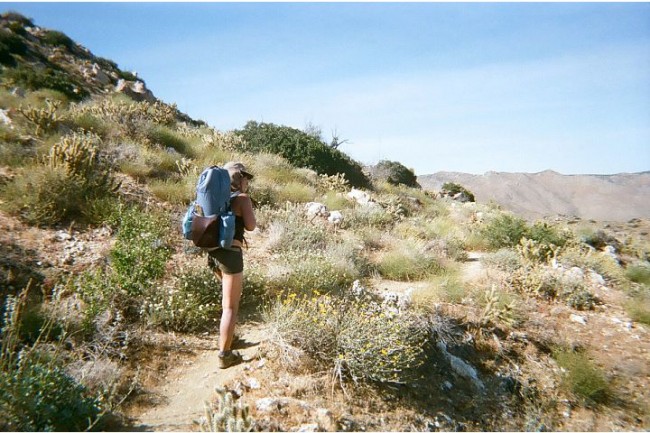
Liz Thomas on the southern, desert end of the PCT
According to the American Long Distance Hiking Association, 196 people have hiked all three trails, which is known in the hiking world as the “Triple Crown”. Only about 40 of those people are women, one of whom is the adventure athlete Liz Thomas.
I first met Thomas last summer, when we fell into step during The Big Parade, a two-day, 64km walk through Los Angeles that ascends or descends about 100 of the city’s public stairways. She was preparing for her second “thru-hike” along the Pacific Crest Trail, meaning that she would hike it end-to-end, in its entirety, at one time, not in segments over the years, as some people do.
What was most incredible was hearing some of her stories about the sport of “speed hiking” — in 2011 she broke the women’s unsupported speed record on the Appalachian Trail, hiking it in 80 days, 13.5 hours. “Unsupported” means that she carried all her own gear, and bought food by hiking into towns along the way — she didn’t even mail herself packages or gear like some thru-hikers do, picking up their shipments at post offices.
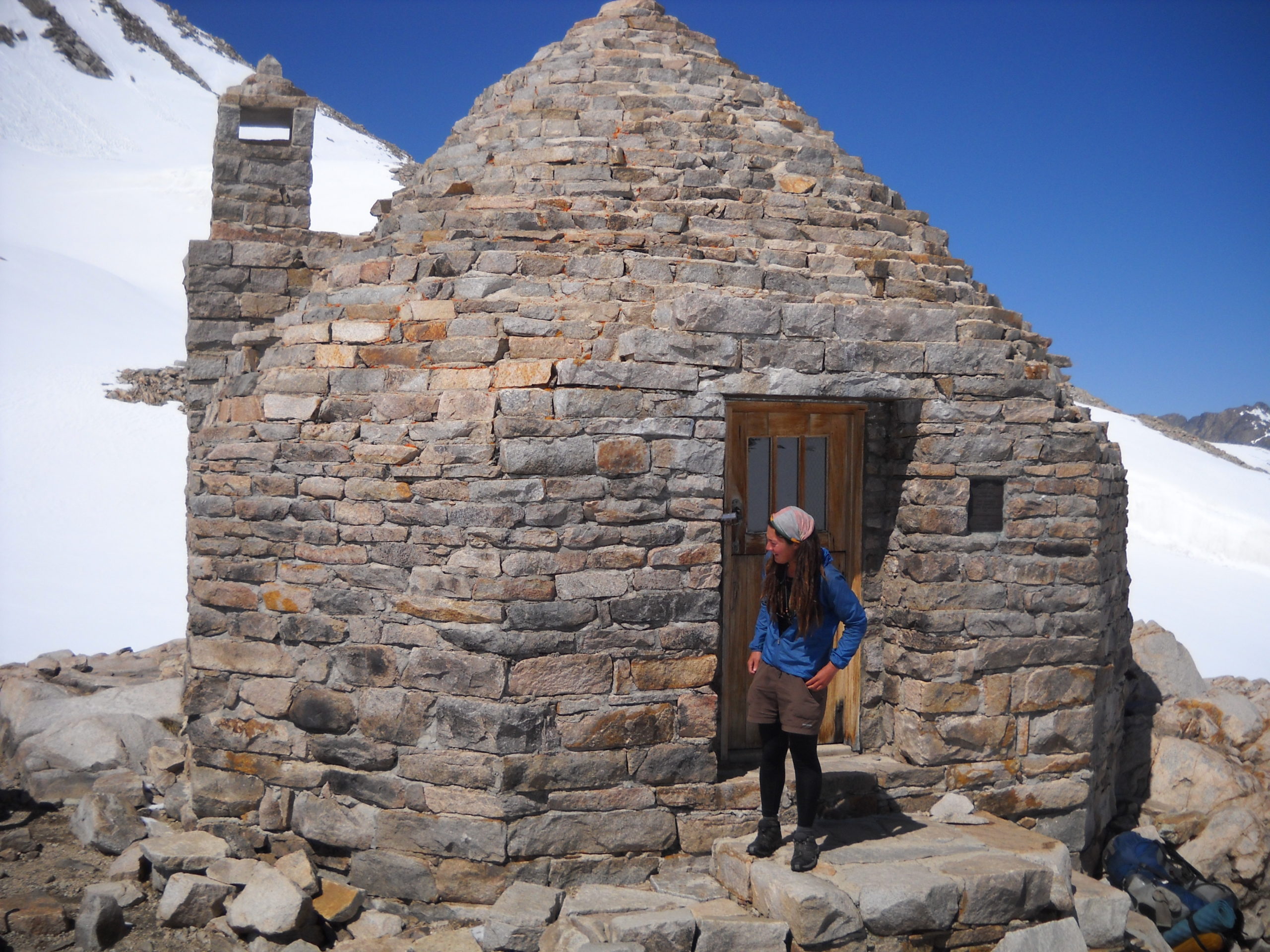
A shelter used by naturalist John Muir on the John Muir Trail, which is part of the PCT
Embarking upon a long-distance thru-hike is not the same as the typical out-and-backs in a nearby park — it requires not only months of planning but a different kind of mental training as well. The reward, however, is like nothing else: There’s a sense of independence and self-sufficiency to be gained by travelling distances you’d only imagined navigating in a car (or plane), yet there’s also an incredible community built around many of these trail systems.
As a seasoned trail veteran, as well as an excellent storyteller, I asked Thomas to walk me through several of the most important lessons learned on long-distance hikes — and how you can plan your own mini-thru-hiking adventure with minimal planning this summer.
Know the Current Conditions
A thru-hiking route is, of course, dependent on many factors, one of which is weather. Although some areas of the US have seen record rain and snow this winter, for much of the west, it’s hot and dry conditions that will be the most dangerous. This year in particular, thanks to the California drought, parts of the PCT that have to be skipped in some years when snow is too deep are seeing little to no snowpack.
A low-snow year is always tantalising to hikers of any stripe, says Thomas. “Walking through snow is typically harder to do and slower than walking on solid ground, so a lack of snow means that record-attempters will be able to make better time going through the Sierras,” she says. But even though hikers are potentially setting speed records, there may be other challenges. “Low snow years also tend to be big fire years, so, speaking from experience, fires can be a big deterrent to setting a record on the PCT.”
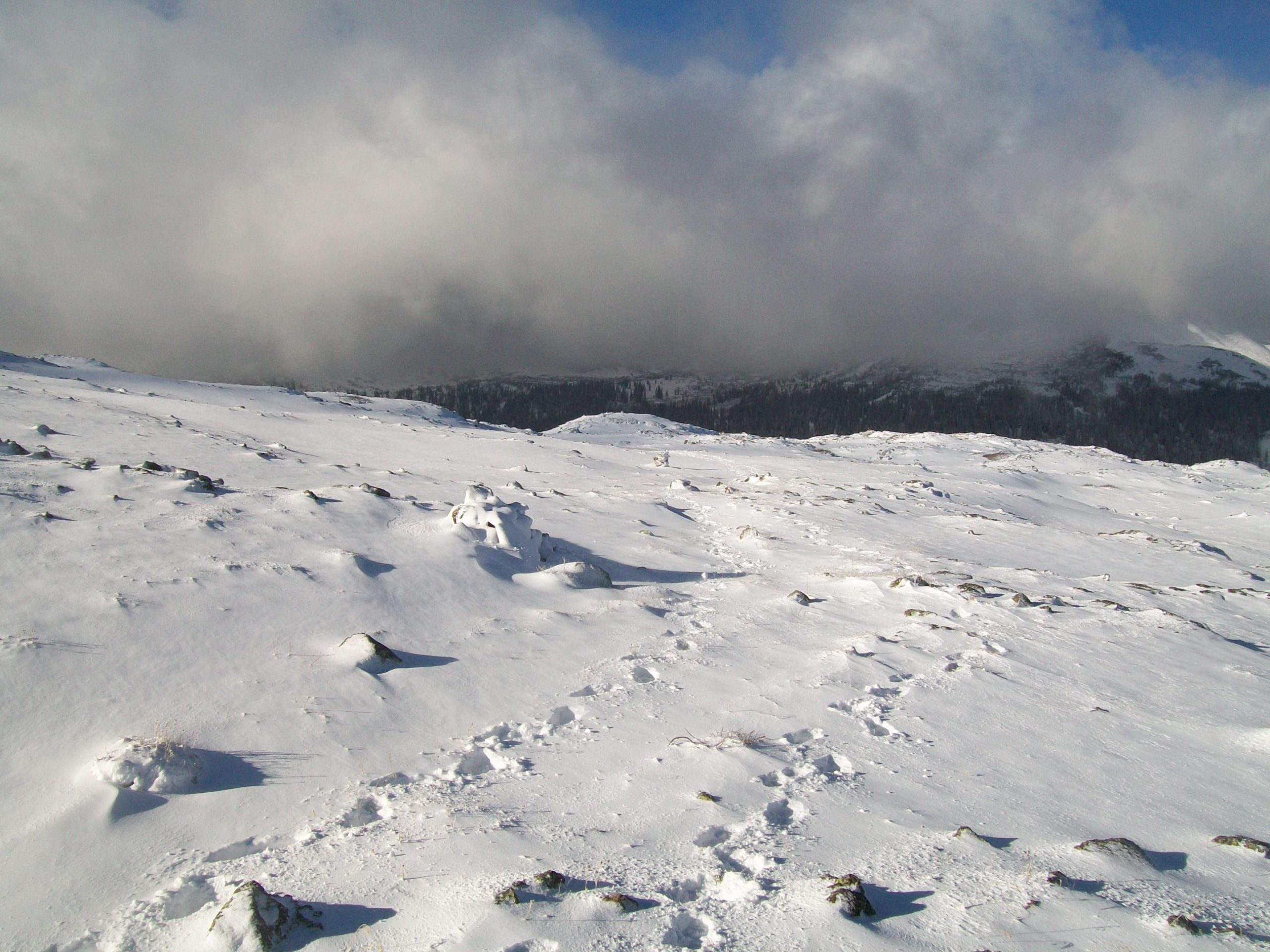
Deep summer snows on the CDT
Even those who aren’t looking to break records should be especially careful hiking in a drought, warns Thomas. “The drought will definitely impact the ecosystem,” she says. “Less water means that plants will be more susceptible to fire. Hikers should take extra precaution this year managing their fires and camp stoves, or opt to go without.” There’s also the chance that some of the naturally flowing springs and other water sources marked on a map or in a book may dry up.
Luckily, on the long-distance trails like the PCT, some local residents — called “trail angels” — put out water caches that hikers can use. These are controversial but end up keeping hikers healthy, says Thomas. “Some people think that the water caches make the trail easier and give unprepared people a false sense of security. Others find the caches a lifesaver and a way to build community between hikers and locals.”
Aim to Pack Ultralite
The style of “ultralite” hiking has emerged in recent years as a way to strip away all but the basics to keep your pack weight low. Some speed-hikers ditch heavy gear and even basics like a tent to keep their mileage up while minimising stress on their bodies. On Thomas’s record-breaking AT hike, her baseweight (everything without food and water) was a staggering seven pounds. On top of that, she estimates she carried only 680g to 900g of food per day and only about 0.5 to two litres of water at any given time.
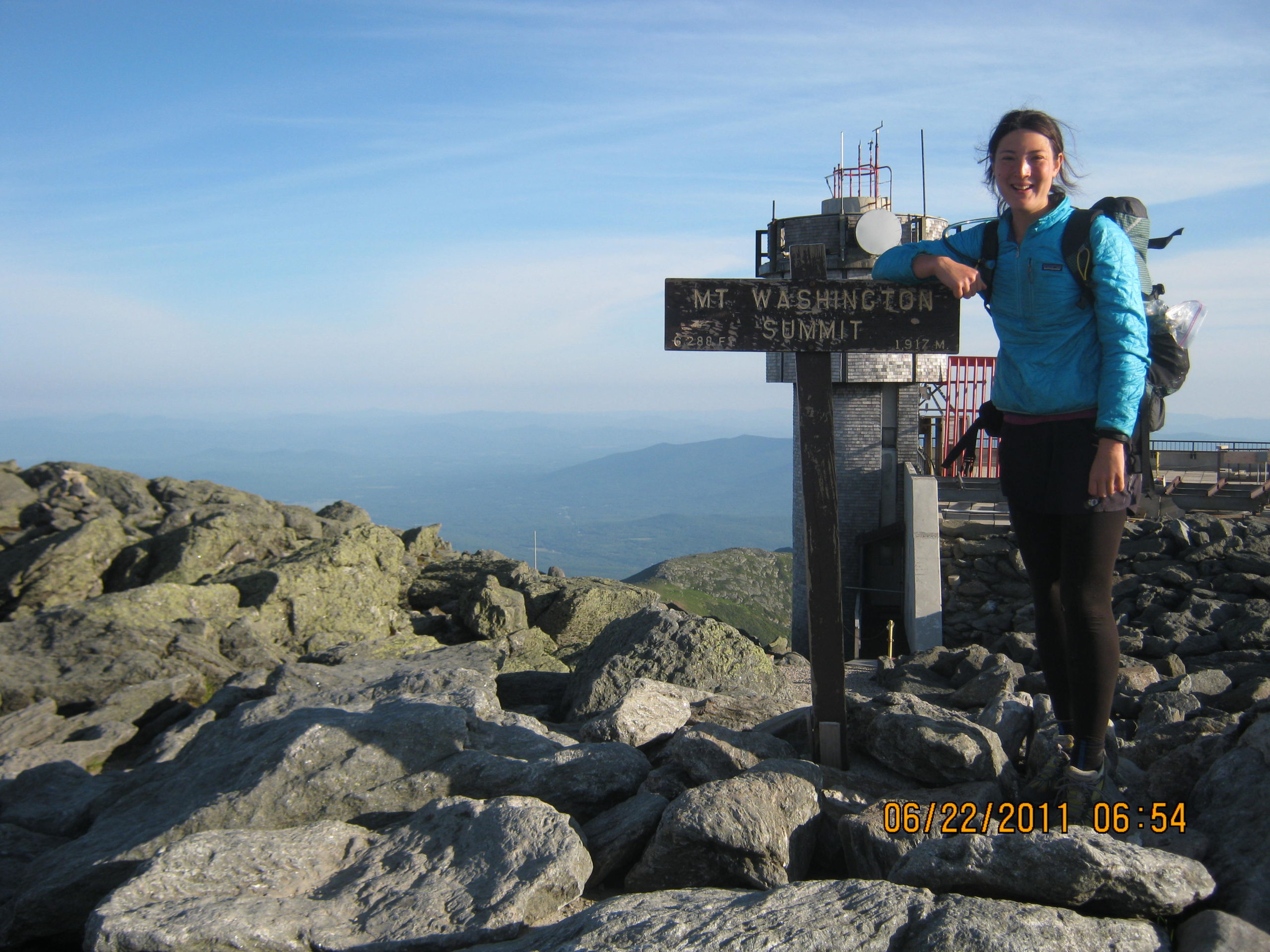
Going ultralite on the AT
Thomas began her ultralite journey by reading several books including Ray Jardine’s Trail Life and Lighten Up by Don Ladigin and Mike Clelland. Now, even though she doesn’t always pack ultralite, she says she’s able to cull and tailor her gear list based on several criteria:
- Where am I going?
- What is the season?
- Climate?
- Temperature highs and lows?
- What style am I hiking? (Am I trying to set a Fastest Known Time or am I taking a friend out who has never been backpacking before?)
- How many miles am I trying to hike per day?
The beauty of thru-hiking, if you’re travelling through towns, is that you’ll also have the ability to ditch or replace gear as you go. The extra layers which were necessary at one altitude can be mailed home, for example, as the trip progresses.
But there are a few things she always packs. One must-have essential from years spent on the trail? Her NW Alpine Eyebright jacket. “It’s a fully waterproof, fully breathable rainjacket and has kept me warm and dry in some gnarly rain and snow storms,” she says. Usually, rain jackets leak or trap sweat inside, but the Eyebright jacket has a ventilation system that keeps out both moisture and rain. “I’ve felt comfortable putting it on over my down jacket when it’s wet and cold.
Usually, this is a big no-no since rain jackets can leak and or sweat can moisten down — and wet down won’t keep you warm,” she says. “I’m still kind of in awe of what this jacket can do. It feels a bit like magic still.”
Hiking Your Own Hike
“One thing I love about thru-hiking is that all sorts of people with all sorts of skills and limitations are able to walk incredible distances,” says Thomas. The body can adapt to walking many hours a day after about two weeks on trail, so many long-distance hikers do almost no training before starting a new trip. “Some experienced hikers even go as far as to put on weight before hitting a trail to prepare for the incredible calorie deficit that comes with thru-hiking,” she says.
Instead, much of the training comes from listening to your body. The most important piece of advice for thru-hikers is learning to read your body and act on your body’s needs accordingly, says Thomas. “Hiking is a bit like flying an aeroplane. Your body has dozens of gauges that you need to monitor and react to in order to avoid disaster. You need to be able to read the weather, read the topography, and react to that, too.”
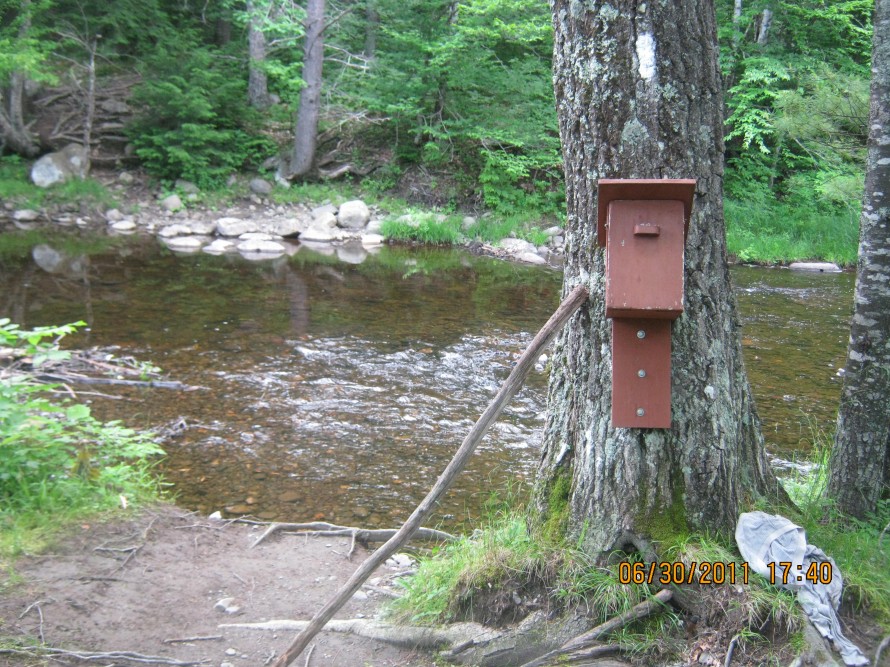
Difficult rivers to cross on the AT
The most dangerous moments during thru-hikes are when you’re hungry or dehydrated, so learning to monitor your own personal indicators is key to staying happy and healthy on trail. “Hiking your own hike — doing what you want and what your body and mind need — is the best piece of advice I can give to hikers, but it is a lesson that took me almost 10,000 miles (16,000km) of hiking to learn,” she says. For an inspirational take on this, check out Thomas’s beautiful account of hiking the often-unmarked Continental Divide Trail.
This week, Thomas is heading not to the Mexican border but to meet up with hiker Erik Schlimmer, who has developed a new route in upstate New York: The Trans-Adirondack Route. After that, her plans become much more ambitious. “I have a dream route planned for 2015 that should be between 8000 to 10,000 miles to and will take 10 to 12 months,” she says. “I’m working with sponsors to partner on making this dream a reality, so if you or any of your readers know anyone interested in watching an epic adventure unfold next year, please get in touch with me!”
Going the Distance
Thomas has an encyclopedia-worth of tips and tricks on thru-hiking and speed-hiking on her fantastic website. Here’s some of her best advice for those hoping to embark upon a long-distance hike this summer.

A gorgeous lupine valley in Montana on the CDT
Pack multipurpose, multifunctional gear: You may not be attempting to go ultralite on this trip, but there’s plenty to learn from Thomas’s packing style, especially when it comes to selecting equipment that can fulfil more than one role on the trail. Check out her gear list for a recent trip to Utah — plenty of hyper-efficient tools that work together to provide maximum safety and comfort — and read more of Thomas’ tips for going ultralite.
Consider going stoveless. A nice cooked meal at the end of a high-mileage day can certainly be rewarding, but lugging the stove, plus all your cookware, plus extra water for cooking, can definitely add pounds fast. If you’ll be greeted with warm nights and don’t mind forgoing hot coffee in the morning, you might want to leave the stove behind. Plus, if you’re in a drought-stricken area, a no-stove approach reduces your fire danger as well. Besides, if you’re thru-hiking through towns, you can always stop for a hot pizza.
Train for hiking by hiking in everyday life. “A well-kept secret is that hiking is the best training for hiking,” says Thomas. “Since hiking trains the body and the mind for backpacking, it is the best way to train for a thru-hike.” But that doesn’t mean you have to spend your pre-trip weekends in the wilderness measuring elevation gain. Thomas straps on a weighted pack whenever she leaves the house, walking to the store, social events, yoga classes to integrate hiking training into her daily routine.
Exercise your mental strength. Many of the trail’s most daunting challenges are the mental ones. Thomas talks about “training her mind” for difficult situations by taking day hikes in urban environments but during miserable conditions — rain, snow, and below freezing temperature. “By fine-tuning how to hike in bad conditions in relatively safe environments — if things gets bad in the city, I can always duck into a building — I can prepare myself for dealing with similar bad conditions in places where there are fewer safety nets,” she says.
Start with an urban thru-hike. Obviously planning to hike something like the PCT takes at least a year of advance preparation, as well as sought-after permits and careful planning. But you don’t have to head out into the wilderness for the thrill of a thru-hike — you can create an itinerary that starts in your own backyard and takes advantage of its access to civilisation. Last year, Thomas discovered the beauty of urban thru-hiking with the Inman 300, a six-day, 290km route in LA that hits 300 of the city’s stairways. She shopped for food at stores and stayed in motels and with friends along the way.
Pictures: Liz Thomas
